#Water Desalination Industry
Explore tagged Tumblr posts
Text
Breaking Down the Mechanics of Pressurized Membrane Modules

Pressurized membrane modules serve as a fundamental technology for processing water and food products while supporting pharmaceutical development alongside various industrial production processes. Membrane modules represent one of several membrane system types that lead to current industrial adoption among multiple organizational applications.
Hydraulic pressure functions in these systems to pull objects through semi-permeable barriers so that the modules can execute desired separations of essential materials from undesirable ingredients. A detailed study of pressurized membrane modules explores their operational mechanism and their benefits alongside their current and projected uses.
1. Working Principle of Pressurized Membrane Modules
Pressurized modules push liquid by using external pressure to pass fluids through permeable membranes featuring tiny pores that block the passage of particles microorganisms and other impurities. Membrane systems operate with pressurized units to carry out filtration techniques including RO (Reverse Osmosis) while also providing UF (Ultrafiltration) MF (Microfiltration) and NF (Nanofiltration). The basic operation involves the following steps:
Feed Water Input: Each module accepts a feed solution that can consist of either pure water or various liquid mixtures.
Pressure Application: An external pressure difference applies to the membrane. The system design determines which mechanism such as pumps will create this pressure.
Separation Process: Membrane pressure pushes liquids from one side while letting molecules with smaller dimensions pass forward while trapping other particles so they collect on the opposite side.
Permeate and Concentrate Streams: The membrane separates liquid into two components - permeate exists as the clear passing solution and the retained substances become concentrated or retentate.
Membrane module operation based on pressure reaches its performance through management of pre-applied pressures that differ according to filtration types. Port de pressure levels differ between membrane filtration techniques where reverse osmosis demands high pressure but ultrafiltration and microfiltration function with lower pressures.
2. Design and Structure
The design of the quality membranes modules is an integral part of their efficiency and performance. There are a number of structural features that make the filtration process optimal for several applications.
Membrane Configuration: Membranes are configured in various forms according to the type of filtration. Common configurations include spiral wounds, hollow fiber, flat sheets, and tubular membranes.
Spiral Wound Membranes: These are the most common form of membrane arrangement used in pressurized modules. They have membrane sheets wrapped around a central core. They provide a very high surface area in a very compact form and are, therefore, very efficient.
Hollow Fiber Membranes: The membranes are essentially tiny fibers through which the liquid flows. These are usually employed for applications where high flux rates are required, such as desalination of water.
Tubular Membranes. These are composed of rigid tubes and can accommodate highly viscous fluids; it is often more industrial and commercial in applications.
Pressure Vessel and Housing: The housing structure contains the membrane and maintains the structural integrity in addition to ensuring protection from damaging elements while under operation. In addition, such vessels can hold up to highly elevated operating pressures to maintain long-term service.
Flow Path Configuration: The flow path in these modules is designed so that the filtering efficiency is achieved at its optimum. The feed flow can either be cross-flow or dead-end flow, arranged according to what the system calls for.
3. Applications of Pressurized Membrane Modules
These quality membranes modules can be applied in a wide variety of industrial applications due to their versatility. Their main use is to separate or concentrate material, and thus they are very significant in applications where high purity and specific separations are concerned.
Water Treatment: Primemtec’s pressurized membrane modules are widely used in municipal and industrial water treatment systems. Reverse osmosis membranes, in particular, are critical for desalinating seawater, treating brackish water, and purifying drinking water.
Food and Beverages: Pressurized membranes in the food industry are used in juice concentration, processing of dairy like milk filtration, and production of beer. Ultra- and microfiltration membranes separate proteins and other dissolved constituents from liquids.
Pharmaceuticals and Biotech: These modules are essential for separating biological substances, sterilizing products, and concentrating active pharmaceutical ingredients (APIs). They ensure high product purity and consistency, which are critical in pharmaceutical production.
Chemical and Petrochemical Industries: Pressurized membranes module are used in chemical recovery, solvent recovery, and other processes where the separation of complex mixtures is required. They help in reducing energy consumption and enhancing operational efficiency.
Wastewater Treatment: The membrane modules in wastewater treatment plants are used at both the filtration and treatment stages to remove contaminants from effluent streams. It ensures that treated water meets specified quality standards for compliance with environmental regulations.
Summary
Primemtec’s pressurized membrane modules stand as fundamental components of modern filtration science which deliver flexible efficient scalable industrial solutions throughout multiple domains. Through pressure-driven system operations, these technologies enable both liquid separation and purification which drives advances across water treatment alongside food processing and pharmaceutical production and multiple other vital industrial sectors. The future of sustainable and efficient filtration technology will become possible thanks to new membrane materials and system design innovations that overcome operational costs and fouling challenges.
#Pressurized membrane modules#filtration technology#reverse osmosis membranes#ultrafiltration membranes#microfiltration membranes#nanofiltration membranes#membrane system#water treatment#desalination#food and beverage filtration#pharmaceutical filtration#chemical separation#wastewater treatment#spiral wound membranes#hollow fiber membranes#tubular membranes#pressure vessel#membrane housing#industrial water purification#liquid separation#sustainable filtration technology#high-efficiency filtration#membrane fouling prevention#biotech filtration#solvent recovery#advanced membrane materials#scalable filtration solutions#energy-efficient filtration#Primemtec membrane modules#industrial filtration systems
1 note
·
View note
Text
The Antiscalants Market: Advancing Efficiency and Sustainability in Water Treatment
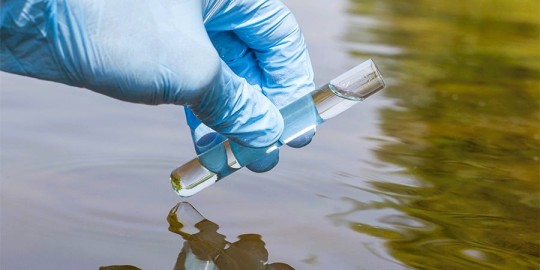
The antiscalants market has emerged as a critical component of the water treatment industry, which continues to expand globally to meet increasing industrial and environmental demands. With scale buildup posing a persistent challenge, antiscalants have become essential for preventing mineral deposits in water systems. This article explores the factors driving the growth of the antiscalants market, its current challenges, and what lies ahead for industry stakeholders.
Addressing the Challenges of Scale
Scale buildup in water treatment systems is not just a minor inconvenience—it’s a significant operational challenge that can lead to reduced efficiency, increased maintenance, and higher operational costs. Antiscalants act as preventive agents by interfering with the crystallization process that leads to scale formation. Their ability to disrupt the growth of scale-forming crystals helps industries maintain smooth operations, reduce system downtimes, and save on maintenance costs.
Key Market Drivers
Antiscalants Market size is projected to grow from USD 4.5 billion in 2024 to USD 5.9 billion by 2029, registering a CAGR of 5.4% during the forecast period.
The expansion of the antiscalants market can be attributed to several important factors:
Growing Industrial Demand: As urbanization and industrialization accelerate, particularly in regions like Asia-Pacific and the Middle East, there’s an urgent need for efficient water treatment solutions. Industries such as power generation, food and beverage processing, and oil and gas rely heavily on water systems that operate without disruptions. Antiscalants are a vital part of this equation, ensuring these systems remain functional and cost-effective.
Environmental Regulations: Governments around the world have introduced stringent regulations to safeguard water resources and promote sustainable practices. Antiscalants help industries comply with these regulations by minimizing the need for aggressive chemical treatments and reducing environmental impact. Their use aligns with eco-friendly water management practices, which is increasingly valued in today’s regulatory environment.
Technological Advancements: Innovations in water treatment technology have spurred the development of new, high-performance antiscalants. These advanced formulations are designed to work under extreme conditions, such as high temperatures and varying pH levels, broadening their applicability across different industries. The continual refinement of these solutions ensures that industries can meet stricter water quality standards.
Desalination Projects: The rise in global water scarcity has fueled investments in desalination facilities. These plants, essential for turning seawater into drinkable water, rely on antiscalants to prevent scale, which could otherwise hinder the efficiency of the desalination process. The growth of desalination infrastructure directly contributes to the demand for specialized antiscalants.
Market Leaders and Their Strategies
Prominent companies in the antiscalants market include Kemira Oyj (Finland), BASF SE (Germany), Ecolab Inc. (US), and Solenis LLC (US). These firms have solidified their market presence through strategic actions such as product innovations, expansions, and collaborations. For instance:
Kemira Oyj emphasizes sustainability-focused solutions, catering to industries that prioritize environmentally friendly practices.
BASF SE invests heavily in R&D to produce antiscalants that offer versatility and adaptability to various industrial requirements.
Ecolab Inc. provides a comprehensive range of water treatment solutions, ensuring a broad market reach and addressing the diverse needs of industrial players.
These leading companies continually adapt their strategies to capture market share and respond to the evolving demands of their clients.
Challenges Facing the Market
Despite its promising growth, the antiscalants market faces several hurdles. Raw material costs can fluctuate, impacting production expenses and pricing strategies. Additionally, developing eco-friendly antiscalants that meet environmental regulations while maintaining high performance remains a pressing challenge. The COVID-19 pandemic underscored the importance of resilient supply chains, as temporary disruptions affected global production and distribution.
Looking Ahead: Future Trends and Prospects
The future of the antiscalants market is aligned with the broader goals of sustainability and innovation. Continued investment in research and development will be essential for producing high-performance, biodegradable antiscalants that meet the dual needs of industry efficiency and environmental stewardship. As water scarcity becomes more pronounced, the market for solutions that support the responsible use and treatment of water will only grow.
The industry will also likely see stronger collaboration between private and public sectors to promote policies and practices that encourage the use of modern water treatment chemicals. Emerging technologies, including those that harness green chemistry principles, could redefine the production and effectiveness of antiscalants.
To Know more Download PDF Brochure :
The antiscalants market is vital for industries that depend on efficient water treatment processes. As demand for these solutions grows, driven by industrial expansion, stricter environmental regulations, and technological advancements, the market is set to continue its upward trajectory. Companies that prioritize sustainable innovation and adapt to changing regulatory landscapes will be well-positioned to thrive, supporting a future that values both operational efficiency and environmental care.
#Antiscalants Market#Water Treatment Solutions#Industrial Efficiency#Sustainability#Desalination#Environmental Regulations#Chemical Innovation
0 notes
Text
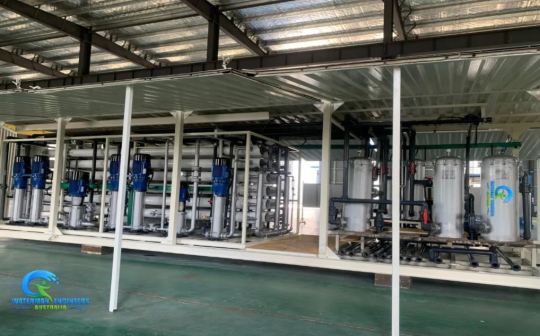
Containerized Sea Water Desalination Plant / Ultrafiltration Plant
Waterman Engineers Australia is prominent in providing sophisticated treatment options for water, such as containerized sea water desalination plants, ultrafiltration systems, industrial reverse osmosis plants, and comprehensive drinking water plants. Supported by decades of experience and a visionary approach, Waterman Engineers Australia has been providing tailor-made solutions to its clients, whether it be at remote locations, industrial sites, or urban centers. For details visit: https://watermanaustralia.com/containerized-sea-water-desalination-plant-ultrafiltration-plant/
#Containerized Sea Water Desalination Plant#Ultrafiltration Plant#Containerized seawater desalination systems#Industrial reverse osmosis solutions#Ultrafiltration plant services#Tailor-made water treatment solutions#Drinking water treatment facilities
0 notes
Text
The Role of Desalination Plant Manufacturers in Solving Water Scarcity
Desalination is a crucial technology for providing fresh water, especially in areas with limited natural water sources. Desalination plant manufacturers play a key role in this process. Canadian Crystalline is one of the notable companies in this industry, offering insights into how these plants work and their benefits.
What Are Desalination Plants? Desalination plants are facilities designed to convert seawater or brackish water into fresh, drinkable water. They use various techniques, primarily reverse osmosis, to remove salts and impurities. This process is essential for regions facing water scarcity or where natural freshwater sources are not sufficient.
Key Features of Desalination Plants:
Reverse Osmosis: This is the most common method used in desalination. It involves pushing water through a membrane that filters out salts and contaminants.
Energy Efficiency: Modern desalination plants aim to use less energy, which helps reduce operational costs and environmental impact.
Customization: Plants can be tailored to different scales, from small community systems to large industrial units, depending on the water needs of a specific area.
Role of Desalination Plant Manufacturers: Desalination plant manufacturers design and build these systems to meet various needs. Their expertise includes selecting appropriate technologies, ensuring system efficiency, and providing ongoing support. Companies like Canadian Crystalline contribute to the industry by developing advanced technologies and providing tailored solutions for diverse applications.
Benefits of Desalination Technology:
Reliable Water Supply: Provides a consistent source of fresh water in areas where natural resources are limited.
Adaptability: Can be scaled to meet different needs, from small communities to large cities.
Sustainability: Advances in technology are making desalination more energy-efficient and environmentally friendly.
Desalination plant manufacturers, including Canadian Crystalline, are essential in addressing global water challenges. Their work ensures that areas with limited freshwater access can still obtain clean, drinkable water. For more information on how desalination plants work and the contributions of manufacturers, explore additional resources and industry insights.
#seawater desalination plant manufacturers#seawater desalination#Brackish water Ro#industrial ro plant manufacturers in chennai
0 notes
Text
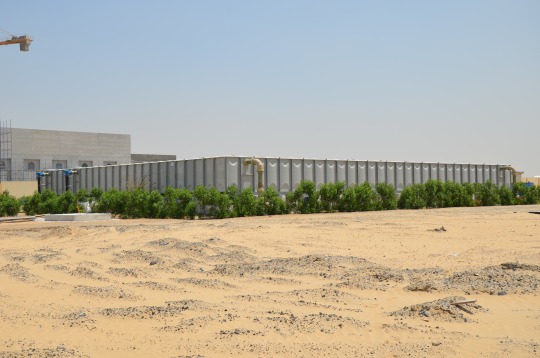
Solico Tanks is dedicated to eradicating concerns about clean water supplies in remote rural communities. Our storage solutions are meticulously crafted to be modular and effortlessly assembled. With only basic tools and a team of willing volunteers, constructing custom tank configurations tailored to the unique needs of rural populations becomes a straightforward endeavor. Whether it's small, individual designs or towering elevated solutions, Solico Tanks offers a spectrum of options for every conceivable residential area.
#business#grp water tanks#tanks#water industry#storage tank#construction#rural development#water treatment#DESALINATION
1 note
·
View note
Text
It's the most fundamental of processes—the evaporation of water from the surfaces of oceans and lakes, the burning off of fog in the morning sun, and the drying of briny ponds that leaves solid salt behind. Evaporation is all around us, and humans have been observing it and making use of it for as long as we have existed. And yet, it turns out, we've been missing a major part of the picture all along. In a series of painstakingly precise experiments, a team of researchers at MIT has demonstrated that heat isn't alone in causing water to evaporate. Light, striking the water's surface where air and water meet, can break water molecules away and float them into the air, causing evaporation in the absence of any source of heat. The astonishing new discovery could have a wide range of significant implications. It could help explain mysterious measurements over the years of how sunlight affects clouds, and therefore affect calculations of the effects of climate change on cloud cover and precipitation. It could also lead to new ways of designing industrial processes such as solar-powered desalination or drying of materials.
Continue Reading.
110 notes
·
View notes
Text
TEL AVIV — Ilana Decker, who moved from Israel to New York three years ago, says she doesn’t agree often with Robert F. Kennedy, Jr. Arguing, as he does, that the government should not make health mandates, she said, makes her “sound like an anti-vaxxer, which I’m not.”
But there is one issue, she said, where she and Kennedy do line up: The man whom Donald Trump has picked as the next secretary of health and human services has publicly floated ending the decades-long policy of encouraging cities to inject fluoride into the American water supply.
Decker supports the change — and she’s speaking from personal experience: Her former home, Israel, stopped fluoridating its water a decade ago.
“I hate to align with RFK Jr. in any way, shape, or form, but I really do agree that it should not be in the water,” she said. Citing concerns about the risk to children, she even switched her 4-year-old to fluoride-free toothpaste, though she didn’t rule out its use fully.
“I have a deep distrust in the government taking away individual health choices ‘for our own good,’” Decker said. “I can use toothpaste with fluoride, but I can’t decide to not drink the water coming out of my faucet.”
The nomination of Kennedy, an anti-vaccine activist and harsh critic of government health agencies, has cast a spotlight on debates over the role the government should play in public health — and over the degree to which mounting distrust in science should guide policy-making.
Fluoridation offers a case study in those debates. According to the U.S. Centers for Disease Control and Prevention, fluoridation in water has been shown to reduce cavities in children and adults by about 25% over a lifetime, with the organization dubbing it “one of the 10 great public health achievements of the 20th century.”
Critics of fluoridation point to studies showing that very high levels of the mineral — beyond what is normally present in fluoridated water — are associated with developmental problems in children; they also cite an array of conspiracy theories, including that the government is seeking to control citizens through fluoride use.
Kennedy has called fluoride “an industrial waste” and “dangerous neurotoxin” and said that he would seek to end fluoridation on “day one” after taking office. (Water is managed locally, so the federal government can only advise and incentivize changes.) As with vaccines, he has said the use of fluoride should be up to individuals, not the government.
“I think fluoride is on its way out,” he said on NBC News shortly after Trump’s election last month. “I think the faster that it goes out, the better.”
Those same debates lay at the root of the decision in 2013 by Israel’s health minister to end water fluoridation. Now, Israel’s policy change could act as a case study for how defluoridation could affect Americans. And the discourse is ongoing, with Israeli public health experts and some parents agitating for fluoride to be reinserted in the water — citing worsening dental outcomes for children — at the very moment when the United States may move in the opposite direction.
“The success of water fluoridation serves as a beacon for public health in general, and by extension, opposition to it should serve as a warning,” said Shlomo Zusman, who served as Israel’s chief dental officer for over two decades and was a vocal critic of the 2014 policy change.
He said modern water purification methods mean that fluoridation is far from the only way the modern water supply is altered. In addition, he noted that because 75% of Israel’s potable water is desalinated, it has no natural fluoride levels at all.
“The idea that water without added fluoride is ‘natural,’ as if it comes straight from a spring, is mistaken – there’s no such thing, it’s all manipulated,” he said. Referring to a story in the Bible, he added, “The days of Rachel pumping water from the well are long gone.”
Israel began mandating fluoridation in nearly all municipalities decades ago, following the first local American fluoridation efforts. An Israeli Health Ministry webpage calls fluoridation “the most efficient, safest, simplest, cheapest, and most equal measure, by a significant margin, among all methods for preventing dental diseases in the general public.”
But in 2013, the health minister, Yael German, pledged to stop requiring fluoridation the following year, citing unnamed doctors who she said had personally told her that fluoridation presents risks to pregnant women, people with thyroid problems and the elderly. Like Kennedy and his followers, she also cited the importance of individual choice.
“All things considered, and balancing all the interests, I feel that continued massive fluoridation of 100% of the water was an incorrect act,” German wrote to an association of pediatricians that was one of several groups to publicly oppose her plan. “And many even believe it infringes on fundamental rights and freedom of choice.”
The government that succeeded German’s term in office pledged to reintroduce fluoride — prompting legal action from German — but it has not been mandated again in Israel.
Since discontinuing fluoride in tap water, Israeli dentists have observed a significant rise in children’s cavities and have urged its reinstatement, even as some parents remain firmly against the idea.
A study published in September found a significant increase in dental restorations and crowns among Israeli children ages 3 to 5, attributing the rise to fluoride’s absence. The researchers, from the Hebrew University-Hadassah School of Dental Medicine, concluded that the results provided “further proof of the need to restore community water fluoridation in Israel.”
Another study, published in January 2022, analyzed six years of data from dental clinics affiliated with a national Israeli healthcare network, showing that children ages 3 to 12 required nearly double the number of restorative treatments compared to before fluoridation ended. Researchers emphasized that even Israel’s expansion of free dental care for all children failed to offset the worsening dental health.
With fluoridation the subject of widespread misinformation as well as ongoing research, Israel is not the only place to adjust its approach over time. Juneau, Alaska, saw pediatric dental health worsen after eliminating fluoride in 2007, according to a study that examined the cost and frequency of dental treatment for poor children. So did the Canadian city of Calgary, which recorded higher rates of cavity-related treatments under general anesthesia among children after it stopped adding fluoride to its water in 2011. Calgary has now decided to resume fluoridation. But dozens of municipalities across the United States have moved away from fluoride use in recent years, including some whose voters made the choice on Election Day last month.
Most of Europe, meanwhile, has either dropped fluoridation or never introduced it in drinking water. Many of those countries offer fluoridated salt and milk, mitigating the potential costs of not including the mineral in water.
Not everyone in Israel is convinced that reintroducing fluoride is a good idea. In one Israeli mothers’ group on Facebook, several women posited that the country’s cavity epidemic has less to do with the absence of fluoride in water and more to do with poor hygiene habits and children’s consumption of sweets and sugary snacks.
“Kids subsisting on white bread and chocolate spread isn’t helping,” wrote one, naming a popular Israeli snack.
Another, who identified herself as a teacher with 25 years of experience, agreed that there has been a significant decline in nutrition.
“I can say with 100% certainty that children’s diets have deteriorated immensely and it just so happens to coincide with the removal of fluoride,” she said.
Several cited a recent study from the National Institutes of Health’s National Toxicology Program that suggests that high levels of fluoride exposure may be linked to lower IQ in children. The report does not question the dental health benefits of fluoride.
The program reviewed more than 500 studies over nearly a decade and concluded with “moderate confidence” that fluoride exposure at concentrations above 1.5 parts per million is associated with reduced cognitive development in children. But the study, which drew criticism from the American Academy of Pediatrics, also noted that that number was far above the recommended fluoride level in U.S. drinking water of 0.7 parts per million.
Another study from May of this year found that prenatal exposure to fluoride was linked to behavioral problems, with children of mothers in areas with higher fluoride concentrations showing symptoms of autism, anxiety and other disorders by age 3, though the authors stopped short of establishing causation.
Zusman dismissed many of the concerns about health risks as a fad.
“There was a time when they claimed fluoridation caused hip fractures, then cancer, and later stunted growth in boys” caused by osteosarcoma, he said. “Now the fashion is ADHD and IQ, so they blame fluoridation on that.”
He said that just like parents who oppose fluoridation, the issue is personal to him, too.
“Believe me, if there were serious, professional studies showing harm, I’d be the first to say, stop fluoridating the water,” he said. “I have eight grandchildren to think of.”
29 notes
·
View notes
Text
Can we stop acting like water is a scarce resource in the Northeast United States?
I just read an article about urban farming in New York City that complained that it uses more water than industrial agriculture per amount of food grown.
New York City sits on the Hudson River. It gets heavy rainfall, and snow. There is no shortage of water that's suitable for watering plants there! And if there was, it's on the fucking ocean as well so, desalinization is in fact a thing? That exists?
I understand that a shortage of potable water is in fact a concern in a lot of the world, including the American Midwest and Southwest. But one-size-fits-all "environmental" concerns just start to sound ridiculous. No, overuse of water is not a problem in New York City. If you were talking about Phoenix, yes, big issue. LA, absolutely, though LA should build a fucking desalinization plant that runs on solar because jesus, people, you're on the ocean and it's sunny all the time, why do you have a water shortage, we have technology for this, but ok, it does not have such things at scale yet so yes, wasting water is a concern there. But any water you dump into the soil in New York does not go to waste. It enters the water table. it goes to the ocean, which evaporates, which causes clouds that blow inward and rain all over the East Coast. New York gets hurricanes, people, it does not suffer from a shortage of water!
And the world is three quarters water. Water shortages are all about "there is no good water right here" and never about "there is objectively not enough water on this planet." If you're on a lake, a river, or in a place with heavy rainfall, you do not have a shortage of water and it's nonsense to talk about wasting water because you have gardens. The water New York uses on gardens cannot be shipped to Arizona. The dehydrated children in Africa can't make any use of the water New York waters gardens with. If you're going to complain about urban gardens using more water per food produced than industrial agriculture, while you're using New York as your example, at least point out that this isn't an issue in New York but could be in, say, Dallas?
Finally, I'm kind of tired of complaints about water shortages anyway when they don't point out that in fact there is no shortage of water, there are shortages of drinkable water and this is a technology issue because desalinization is a technology that exists, and so are aquifers. People not building these things is likely a social problem. It's not environmental the way toxins pumped into the air is environmental. It's "you could fix this by investing in desalinization and water transit, but you chose not to."
On Earth, water is never destroyed. If it's used by life, then it's taken back out when that life dies. The only thing you can do to water to permanently ruin it is use it to cool off nuclear waste, which causes it to pick up enough radioactive hydrogen (tritium) that it makes radioactive heavy water. And we don't have enough nuclear material on the planet to make a dent in the amount of water we have on the planet.
15 notes
·
View notes
Note
hate anons r dumb have my essay instead
The Organ Pipe Cactus National Monument is a national reserve in Pima County, Arizona, spanning 330,688 acres, housing more than 924 species of flora and fauna. The park was established on April 13, 1937, as a way to preserve the beauty of the Sonoran desert for years to come, allowing future generations to enjoy the beauty of the vast desert land that makes up the area.
The desalination pipeline plans to destroy it.
The pipeline itself would need a corridor spanning 175 feet wide, not to mention a power transition line that would need a 150-foot corridor.
And this line halves the Organ Pipe straight down the middle.
I’m sure you can see how this is a problem.
Organ Pipe is quoted as being “one of the most ecologically fragile places in Arizona,” and, as previously mentioned, is a biodiversity hotspot. It’s rare to see places in Arizona brimming with life, as human habitation has taken over, terraforming the desert into something more livable for us people. We’ve dried up rivers, seeped all the groundwater, practically run the desert dry with the conceited belief that this world is meant for us. That it is our god given right to take what we believe we’re owed. Because, “hey, we’re the most technologically advanced species in the history of Earth, it doesn’t matter who or what came before us! We decide how the environment works!” And then, once we run one resource dry, we just go to the next. But I digress.
The monument houses multiple different endangered species, including but not limited to the Quitobaquito pupfish, the lesser long nosed bat, the Sonoran pronghorn, and the cactus ferruginous pygmy-owl. These species are already struggling to survive, and a major cause is human interference. Is it the wisest choice to cut through their habitat, just so we don’t face the consequences of our actions? Is it the wisest choice to remove their homes, instead of even trying to take the proper steps to better our water use? Do we really want the reason that these species die out to be due to our own personal selfishness? In a world filled with ever growing industrialization, where lush forests turn into concrete jungles, lively fauna replaced by roaring cars, once sunny skies darkened by smog, do we really want to cut through an area on the ever-shortening list of places where we can almost see what the world looked like before we came? Please, take a moment to think about this before you vote.
Maybe you can’t find it in you to see this way. Maybe you can only see the downsides of not cutting through the Organ Pipe. Maybe you can only see the upsides. Maybe you see the pipeline as the perfect solution. Maybe you’re thinking, “Well, sure. Maybe some habitats will get hurt, but we can place more conservation measures for them. And, besides. It’s for the good of the people.” I see your point, I really do. But, I do have to ask: Is it truly better for all people?
Folks, I bring you to the reason why I wrote this essay.
The pipeline would directly cut through Tohono O’odham lands.
Hundreds of years before settlers came to colonize the west, multiple tribes lived in the Sonoran desert area, including the Pascua Yaqui, Hohokam, and, most notably, Tohono O’odaham. The Organ Pipe contains 16,000 years of native culture, with artifacts still being found to this day.
But the problem is bigger than just those tribes. It's bigger than Organ Pipe, even. It’s a problem with America itself.
Native Americans, throughout history, have been swept aside and disregarded. We’ve been chased out of our native lands, forced to live in reservations, our culture hidden, and our voices silenced. Some would argue that this isn’t a problem anymore. “That was all in the past, with the Trail of Tears!”
It’s not. It’s happening to this day. Just look at Hawaii. In O’ahu, Native Hawaiians are forced out of their homes, forced to live in homeless encampments because American tourists went to Hawaii and decided they didn’t want to leave. My native lands are trampled and disrespected, destroyed to make room for shiny new resorts and homes. My people are priced out from the lands in which they lived for hundreds of years. Hula dance, one of our art forms to tell stories, is made into some fun little dance for them to watch at their version of luaus. My culture is made into a mockery of what it once was, into something more ‘digestible’ for tourists. My language is dead. My heritage is dead. I have to cling on to the bits I still have.
Our lands are sacred. That goes for every Native American. If we have a choice, shouldn’t we go with the one that protects the lands of the people who were here before us? Shouldn’t we protect these cultures that existed long before ours, lest we let it die out like Hawaii?
I know what it's like to not know your culture. To feel so disconnected from it you feel like a liar when you say you are. To feel so lost and alone in a world that's cut you off from your culture, your heritage, your people. It's hard. It's hard because you don't feel like you fit. Too Americanized to be native. Too native to be an American. Organ Pipe allows the descendants of the Tohono O'odham tribe to experience their heritage, their culture. You build this pipeline, and you cut off them from ever having that experience. You keep them in the dark of who they are. You build this pipeline, and you do what every American government official has done before: silence native voices. Push them into reservations, take their land, and destroy it. Do you really want history to repeat itself? Do you want to be the cause for a parent telling their child "I don't know" when they ask who their tribe was? Do you want to take away the joy of knowing who your ancestors were? Of going to their lands, feeling the sand between their toes, and feeling the euphoria of knowing who you are? I agree, water is important. But is it important enough to rob one of their roots? To destroy lands deemed sacred? To take what isn't yours to take? I urge you all to ask yourselves these questions when you vote on the pipeline.
I cannot make your decision for you, but I will leave you with this: As someone who is both Native Hawaiian and Native American (to a tribe I have never known and will never know due to suppression within my family), I’ve always felt a disconnect between me and my culture. It feels like hell, not knowing who I am. Every day, I feel like I will never be Hawaiian enough, or Native enough. Like a part of me is lost to time. All I am asking is that, please. Let them keep their land. Just so that someone out there can visit their cultural land, and feel whole.
Thank you.
dude this FUCKS actually. the last paragraph hits HARD
6 notes
·
View notes
Text
Wave energy is here.
Most often referred to as wave energy, or wave power, of all the choices available for generating renewable energy, I’m most intrigued about what the natural rhythm of sea waves can do. It will take a combination of all the clean energy alternatives, currently led by solar and wind, to one day displace fossil fuel as the world’s dominant form for powering up civilization. And, if the wave energy scientists and technicians can discover the correct formula for financial and environmental acceptance, ocean motion just might ride to the top of our destined sustainable energy platform and be the most viable choice in the expanding sustainable energy landscape.
Given that onshore wave power is currently one of the lesser-known renewable energy options, don’t be surprised if it emerges as a legitimate contender to displace dirty polluting energy.
Here’s why.
Not only is it a source for the generation of electricity it’s useful for other kinds of beneficial work such as desalination, and also the pumping of water.
Simply put, wave energy is defined as the capture then transition of energy created by the up and down motion of the powerful ocean wave volumes. Therefore, it is truly sustainable energy.
Interestingly, before being considered as such, the waves were used as far back as the early 1800s when they powered up nearby mills, saws, and pumps. Even a house. During the last century, salt water had a featured role in energizing navigational lights; and as recently as the 1970s, converting wave power to electricity was introduced on a very small scale.
Since then, different technical approaches to wave energy have been introduced that can be narrowed down to five suitable methods. Designs implementing absorbers, attenuators, oscillating water columns, overtopping, and the inverted-pendulum type each present a different technique to use ocean motion as a source of power. Still, in the infancy stages, very few of these types of wave power concepts have been installed in wave farms that operate with a history of success.
On the bright side, climate scientists are optimistic given the obvious availability of oceans around the world, no harmful gasses are emitted, and never-ending reliability - regardless of the weather.
Certainly in the early “prove ‘em wrong” phase, but when considering the magnitude of wave surge surrounding every continent, the potential of this clean energy sheer volume is breathtaking.
130 million additional homes could very well be powered up by this latest effort to further diversify humanity’s clean power mix and alleviate greenhouse gas from multiple directions.
Of course, like all inexhaustible energy options, there are drawbacks. The unknown impact on surrounding marine life; the eye-sore image conflicting ocean appearance, thus tourism; and the ongoing cost of maintenance. Most concerning is the very high cost of development and installation.
In my humble opinion, there is one wave energy company that is leading the ocean motion industry with some proven success. Known as Eco Wave Power (EWP), it recently received permission to introduce its unique patented technology to the United States. I believe this to be the most newsworthy clean energy upstart in some time because the natural motion of the ocean waves can be transformed into electricity close to shore while controlled by EWP automated technology on shore.
Last decade, this company operated its wave energy concept for six years in Gibraltar in conjunction with the nation’s National Electric Company. The objective was to prove the concept could safely connect to the grid under the stress of the surrounding storm surges. From this success, the findings were used to design a pioneering wave power installation at the Jaffa port in Israel. That operation has been successfully connected to the country’s energy grid and was officially switched on. EWP is truly exporting electricity into Israel’s economy!
And finally, the best news in this regard: the first commercial-scale wave energy project is committed for the city of Porta, Portugal, where an EWP wave energy relationship began in 2020, which will last 25-30 years…
Read more at www.thescientistblog.com/blog
#climate change#hope#government#landscape#global warming#inspiration#philanthropy#climate crisis#democrat#republican
3 notes
·
View notes
Text
Banaba
How the West Made an Island Unhabitable (and Consumed its People's Bones)
Banaba, aka Ocean Island, is a small island in Micronesia. It's legally part of Kiribati [kih-rih-bas] but geographically, culturally, and politically very distinct. At three hundred kilometres from its nearest neighbour, Banaba is one of the most isolated places on earth.
It is also among one of the most ecologically devastated.
In the 1900's, a UK / Aotearoa / Australian owned mining company dug up and shipped away huge amounts of Banaba's phosphate-rich soil for use as fertilizer. They grew rich and created Aotearoa's massive agricultural industry from literal stolen land.
More than just the physical earth was taken. Phosphate mining stripped the layers where Banabans had buried their dead for thousands of years. The dust of their bones fed the lands of the West, creating rich green fields that Banabans would never see the profits of.
When I say 'huge amounts' of earth; 90% of the island's surface was stripped away.

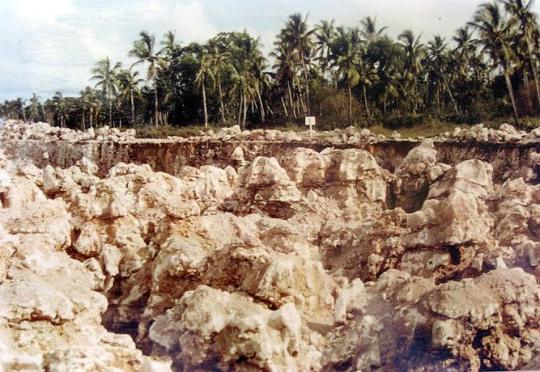
[Left image: an aerial view of Banaba showing a roughly oval island with no vegetation in the centre. The outside is ringed by a thin strip of forest. Right image: a photo of the edge of a mining area. In the background is a forest, but then the ground drops off sharply into irregular rocky terrain.]
The ancient sacred caves were destroyed. The island's only source of fresh water was irreversibly polluted and left it unusable to this day. The interior of Banaba became one great hollow of uneven rock, so full of dips and pillars that it is now almost completely impassable on foot. It was left a barren land.
Banaba is not the only Pacific island devastated by phosphate mining; most notably, its neighbour Nauru had 80% of its surface stripped away. But nowhere has been exploited to quite the same extent as Banaba.
There were further indignities and horrors inflicted on the Banaban people, including indescribable atrocities carried out by Japanese occupiers during WWII, and tbe Britain-led forceful relocation of Banabans to Rabi Island in Fiji. Many still live there today. Others have migrated away.

[Image: Banaban girls performing a traditional dance on Rabi Island.]
The traumatic experiences of Banabans, the mass murders and the separation from their ancestral land have all caused significant cultural loss. This includes the loss of the Banaban language.
Approximately three hundred Banabans have returned to their home island, surviving due to supplies shipped in every few months. The only freshwater source remains unusable and severe droughts strike Banaba every three to four years. Although a desalination plant exists there, the vulnerability of the island became all too clear in 2021 when the plant broke down in the middle of a drought. It took three months for repair equipment to arrive. During that time the residents had no fresh water. Their only food was fish because all of their crops had died. They survived by sucking the liquid from fish eyeballs.
And an Australian mining company wants to do it all again.
Part of the reason that people returned to Banaba, despite the difficulties of life there, was to protect it from further mining. But in August last year, the Australian mining company Centrex announced a plan to restart phosphate mining on Banaba. The plan has been paused due to protests from the Banaban people, but it could be restarted again at any time.
We cannot leave it here. If you want to do one small thing to help, you can sign this petition from Banaban community leaders to stop the proposed new phosphate mine. But more than that, Banabans have been campaigning for Australia and Aotearoa to fund ecological restoration projects, especially for the sacred caves that were once the island's source of fresh water. As Katerina Teiawa says:
"We need to move away from this same continuous narrative of ‘the poor Banaban people, who have no water, help them’ and move towards an approach that is actually finding a solution.
This whole thing is a series of crises. We can’t just keep telling the story of devastation and vulnerability over and over again. Where does the crisis end, if not with justice?"
25 notes
·
View notes
Text
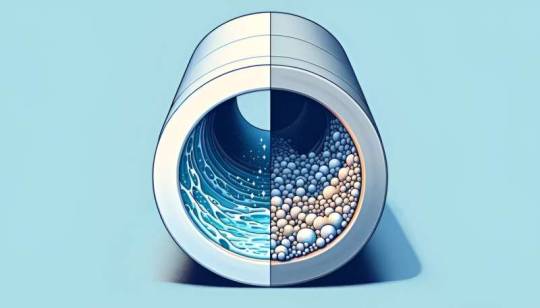
Scientists reveal molecular mysteries to control silica scaling in water treatment
Collaborative research that combined experiments at Yale University and molecular dynamics simulations at the Department of Energy's Oak Ridge National Laboratory provides new insights into solving a major technical obstacle to efficient and sustainable industrial operations. Silicon is the second most abundant element in the Earth's crust, and in natural water sources, it is commonly found in the form of dissolved silicic acid. Under certain pH and temperature conditions in industrial feed water, the acid can become oversaturated and insoluble, precipitating a substance called silica scale that encrusts equipment. This unwanted coating fouls the surfaces of various engineering systems, such as reverse osmosis desalination water-treatment membranes, heat exchanger components, and plant pipelines.
Read more.
14 notes
·
View notes
Text
Hamas didn’t invade Israel on Oct. 7 for its amusement. The barbaric sneak attack is a part of the pogrom intended to wipe out the Jewish state. It was a crime against humanity, and not just because of its savagery. We would all be worse off if Israel ceased to exist. The same cannot be said for Islamic terrorists.
Israel’s contributions to the modern world are momentous. When not dodging bullets, rockets, and homicide bombers, Israelis have since 1948 developed:
Copaxone and Rebif, drugs that treat multiple sclerosis, and Exelon, which treats mild to moderate dementia in Alzheimer’s and Parkinson’s patients.
The PillCam, “a minimally invasive ingestible camera in a capsule that allows visualization of the small bowel.”
The water desalination process.
The Sniffphone, “that can actually ‘sniff out’ diseases.”
And SpineAssist, “the first-ever spine robot” that has the “ability to provide real-time intraoperative navigation.”
The Weizmann Institute of Science in Rehovot, Israel, responsible for some of the inventions listed above, has also produced diabetes and flu vaccines, is using T-cells to treat damaged spines, and is a pioneer in industrial — and medical — uses nano materials.
Other impactful Israeli products include drip irrigation, a revolutionary microprocessor called the 8088, the NIR heart stent, voice-over-internet protocol, the USB flash drive, the Waze navigation app, ReWalk, “a commercial bionic walking assistance system,” and “the first commercially viable firewall software.”
Our own security has benefited from Israel’s labor and work ethic.
“Many Israeli innovations are present in upgrades to U.S. Air Force fighters and Army equipment,” says the international law firm Smith, Gambrell & Russell. One important advance in particular is the helmet-mounted display system for the new F-35 Joint Strike Fighter.
So we have a country of 9.23 million, mostly desert, that is only 75 years old, is “surrounded by enemies” and in a constant state of war, which has “no natural resources,” yet “produces more start-up companies on a per capita basis than large, peaceful, and stable nations and regions like Japan, China, India, Korea, Canada, and all of Europe.” It is the only nation outside of the U.S. that Warren Buffet invests in.
Have the Palestinians or Hamas, currently at war with Israel, done anything that compares to what the Israelis have achieved? More broadly, beyond the Allahista terrorist groups, what has Islam contributed to the modern world?
Not much.
Since 1901, Jews, who total 0.2% of the world’s population, have won 189 Nobel prizes for physics, medicine, chemistry and economics. Over that same period, Muslims, who make up nearly a quarter of the global population, have won four.
If it seems as Islamic groups, Hamas and Hezbollah prominent among them, are more interested in spreading nihilism, committing atrocities, and destroying civilization than making the world a better place, well, then there’s a good reason for it. That is exactly what the heroes of an increasingly large number foolish Westerners are aiming for.
Meanwhile, Israelis see themselves “as having a role in the world to repair the world,” says Chemi Peres, managing partner and co-founder of the venture capital firm Pitango, chairman of the Peres Center for Peace and Innovation, and son of the late Israeli Prime Minister Shimon Peres.
“We call it tikkun olam, and here at the Peres Center we have a mission statement, which is to introduce innovation and new ideas and new technologies, not only for ourselves but to solve the problems of the world.”
Islam is part of that world, but too many of its adherents live to do just the opposite.
— Written by the I&I Editorial Board
37 notes
·
View notes
Text
Dow Membrane || Pearl Water Technologies
Dow Membrane technology provides cutting-edge solutions for water treatment, offering high-quality filtration across various industries. Renowned for their superior performance, Dow Membranes deliver exceptional efficiency in desalination, wastewater treatment, and industrial processes. Designed for durability, enhanced filtration capacity, and ease of maintenance, Dow Membranes are a trusted choice for businesses seeking reliable and long-lasting water purification. With a focus on optimizing performance and sustainability, these membranes ensure clean water solutions in diverse applications. Buy Dow Membrane today to ensure clean and premium water for your home and industry !

2 notes
·
View notes
Text

You're right. Other than modern drip irrigation, water saving innovations, geothermal power, solar powered windows, cherry tomatoes, monitors for sudden infant death syndrome, MobileEye, Waze, silent wind turbines, the 8088 Intel chip which paved the way for modern computers, USB flash drive, harmful microorganism counters for food and beverage industry, using the ocean to produce solar energy, optical heart beat monitoring, increasing plastic recycling efficiency by 50%, portable sleep apnea monitors, the world's smallest camera for medical procedures, water utility leak detection technology, HP digital printing press, remote heart and vitals monitoring for medical staff, contributions to developing a COVID vaccine, R&D that led to the first cell phone, a phone that can detect diseases including cancer, multiple sclerosis, and Parkinson's with 93% accuracy, an exoskeleton that helps paraplegic people walk again, a digestible medical camera in the form of a pill, a flexible heart stent that saved millions of lives of people suffering from coronary heart disease, computer firewalls, antivirus software, ICQ, the iron Dome missile defense system, glasses that read text to visually impaired people, leading breakthrough medical technologies like the ability to 3d print a functioning human heart and nanotechnology that detects and attacks cancer cells, home kits for analysing guy bacteria, desalination tech and a machine that can literally make safe drinking water out of air... WHAT HAS ISRAEL ACTUALLY DONE FOR YOU.
The Mossad: Satirical, Yet Awesome
@TheMossadIL
40 notes
·
View notes
Text
Rajasthan Moving Ahead on the Path of Development: Col Rajyavardhan Rathore

Rajasthan, the land of culture, tradition, and valiant history, is rapidly transforming into a hub of modern development under the vision of leaders like Col Rajyavardhan Rathore. With a perfect blend of tradition and innovation, the state is making significant strides in infrastructure, education, healthcare, and economic growth, creating a model for balanced progress.
A Vision for a Developed Rajasthan

Key Areas of Development in Rajasthan
1. Infrastructure Growth
The state has witnessed a remarkable transformation in infrastructure, paving the way for economic and social development.
Smart Cities Mission: Jaipur and Udaipur are being equipped with world-class facilities.
Rural Connectivity: Expansion of roads and bridges to connect remote villages with urban centers.
Energy Projects: Investments in renewable energy, including solar and wind power, making Rajasthan a leader in clean energy.
2. Industrial Expansion
Rising Rajasthan Global Investment Summit: Attracting global investors to foster industrial growth.
Special Economic Zones (SEZs): Promoting exports and creating job opportunities.
One District, One Product (ODOP): Highlighting local crafts and industries to boost rural entrepreneurship.
3. Education for All
Rajasthan is making significant investments in education to empower its youth.
New Colleges and Universities: Increasing access to higher education across the state.
Skill Development Programs: Initiatives to prepare students for competitive exams and vocational careers.
Digital Classrooms: Modernizing education with technology to bridge the urban-rural divide.
4. Women’s Empowerment
The state is committed to fostering an environment where women can thrive.
Financial Inclusion: Women-led self-help groups are accessing credit and training.
Safety Initiatives: Programs like Operation Shakti ensure safety and security for women.
Educational Incentives: Scholarships and campaigns like Beti Bachao, Beti Padhao are transforming the landscape of girls’ education.
Healthcare: A Priority for All
Healthcare remains a cornerstone of Rajasthan’s developmental agenda.
Ayushman Bharat Yojana: Providing affordable healthcare to underprivileged families.
Rural Healthcare Centers: Strengthening primary healthcare infrastructure in villages.
Health Camps: Regular medical camps for early detection and treatment of diseases.
Agricultural Advancements
Given that Rajasthan has a significant agrarian population, the government has taken steps to modernize agriculture.
Irrigation Projects: Ensuring water availability in arid regions.
Support for Farmers: Subsidies on seeds, fertilizers, and equipment.
E-Mandi Systems: Digital platforms for better pricing and reduced exploitation of farmers.
Sustainable Development Initiatives
Rajasthan is committed to sustainable growth that preserves its environment.
Solar Energy Parks: Leveraging the state’s abundant sunlight for clean energy.
Water Conservation: Programs like Jal Swavlamban Yojana for efficient water use.
Eco-Tourism: Promoting tourism that respects and protects the environment.
Col Rajyavardhan Rathore: Driving the Change
Col Rathore has been instrumental in championing various developmental initiatives.
Grassroots Engagement: Regular interactions with local communities to address their concerns.
Focus on Youth and Innovation: Encouraging young entrepreneurs to drive economic growth.
Cultural Revival: Supporting projects that preserve Rajasthan’s cultural and historical heritage.
The Path Ahead: Challenges and Opportunities
While Rajasthan’s progress is commendable, challenges like water scarcity and urbanization demand innovative solutions. The government, with leaders like Col Rathore, is tackling these with forward-thinking policies and public-private partnerships.
Addressing Water Issues: Accelerated efforts in rainwater harvesting and desalination plants.
Urban Development: Balancing modernization with the preservation of Rajasthan’s historical identity.
Empowering Rural Areas: Ensuring that growth reaches every corner of the state.
Rajasthan’s Transformational Journey
Under the visionary leadership of Col Rajyavardhan Rathore and the state’s dedicated governance, Rajasthan is making remarkable progress. The focus on inclusive development ensures that no section of society is left behind, creating a future where tradition and modernity coexist harmoniously.
As Rajasthan moves ahead on the path of development, it sets an inspiring example for other states to follow — a state that honors its past while embracing its future.
3 notes
·
View notes